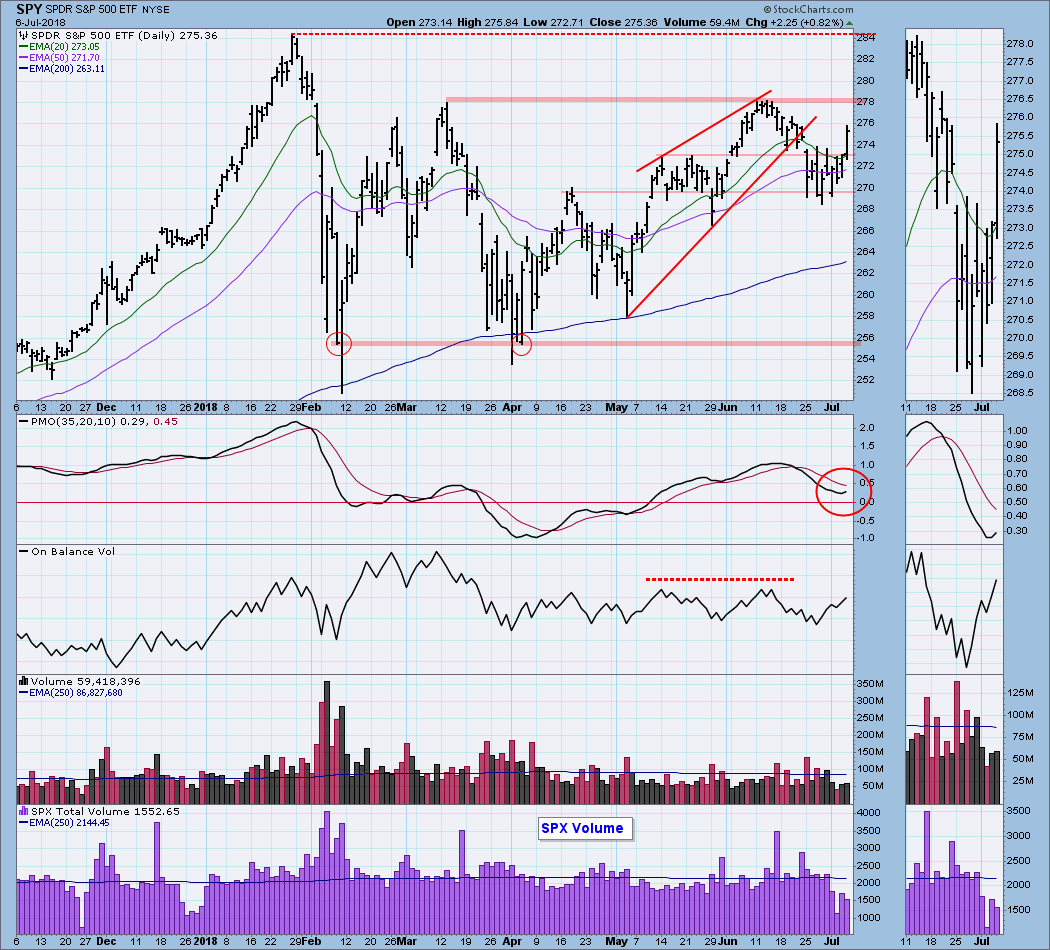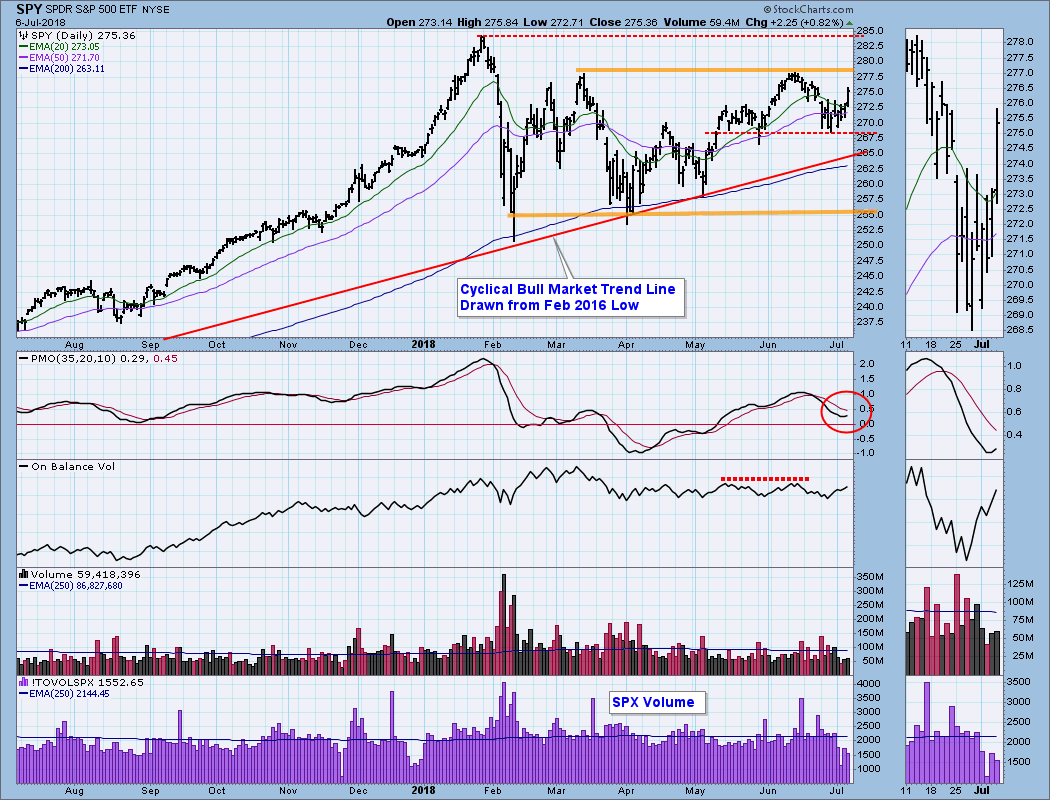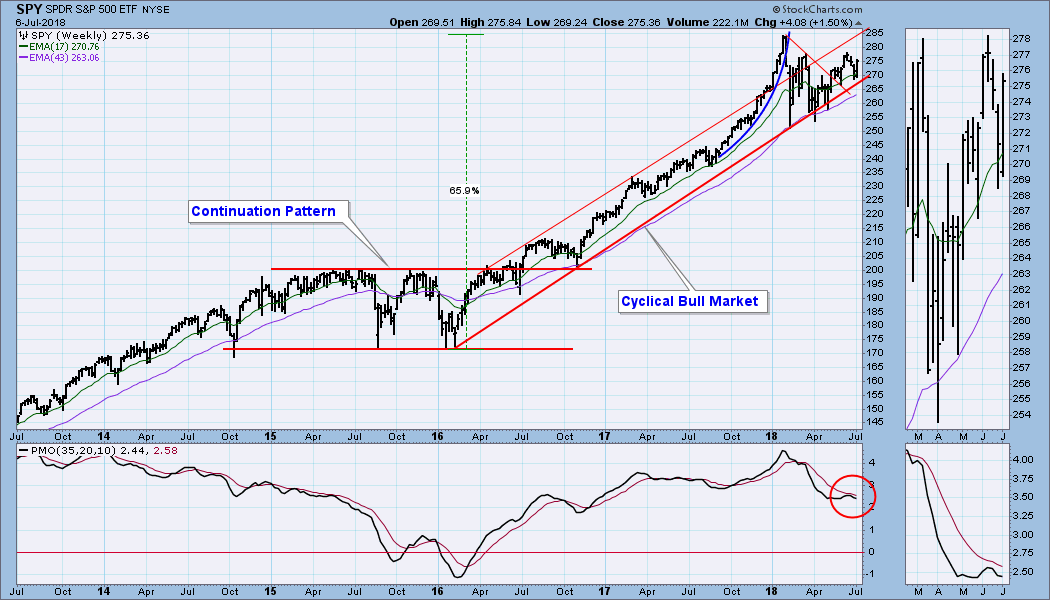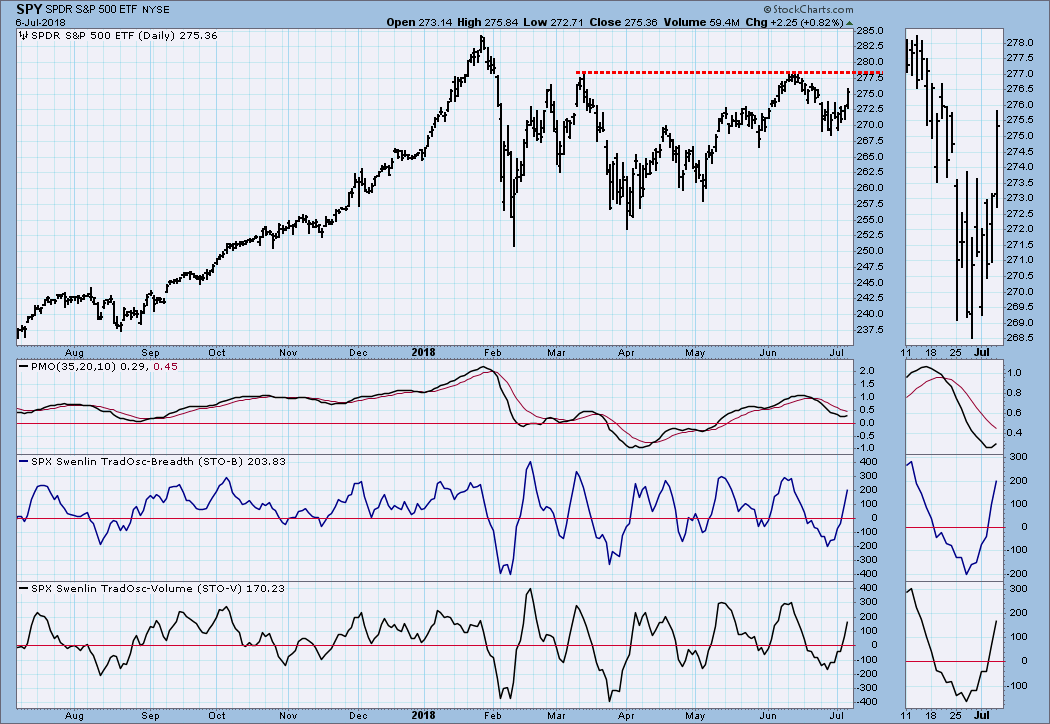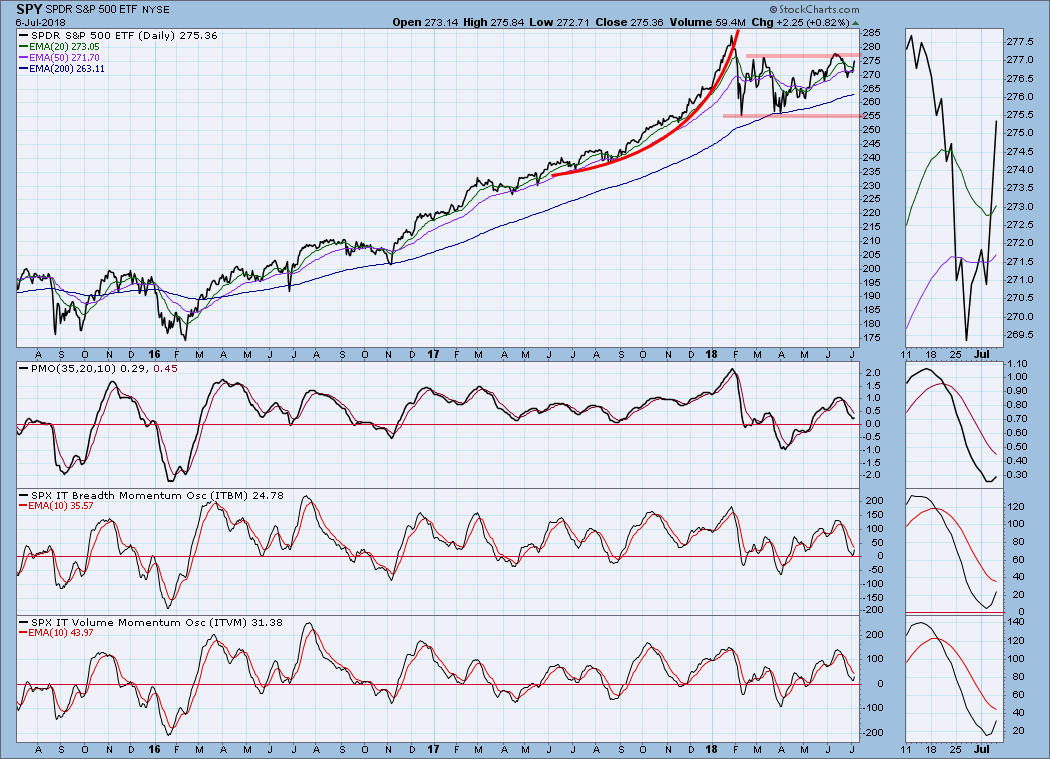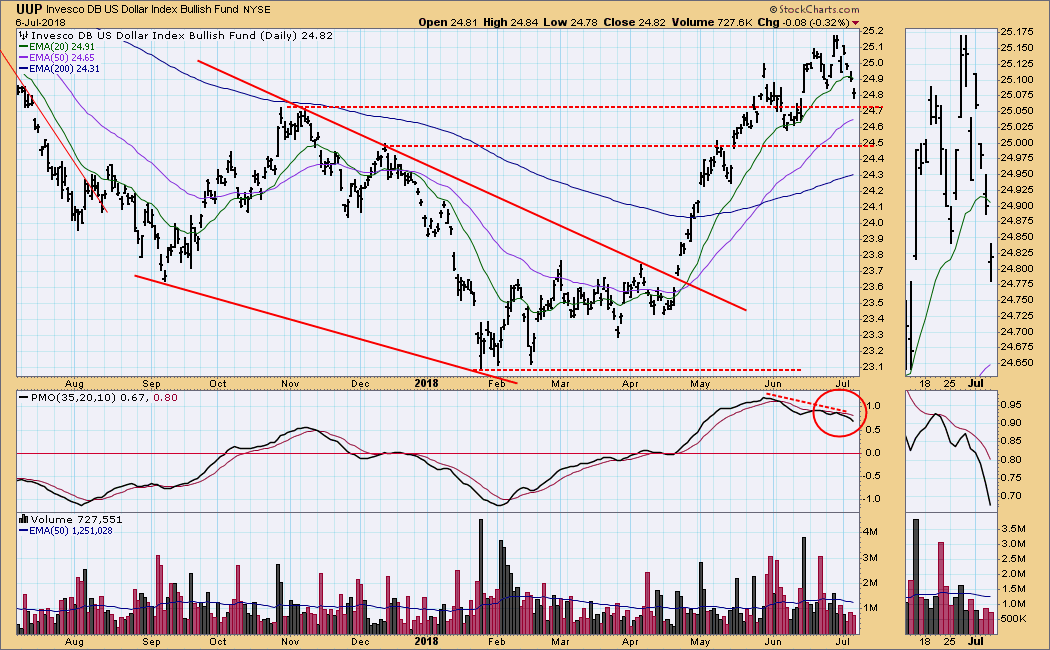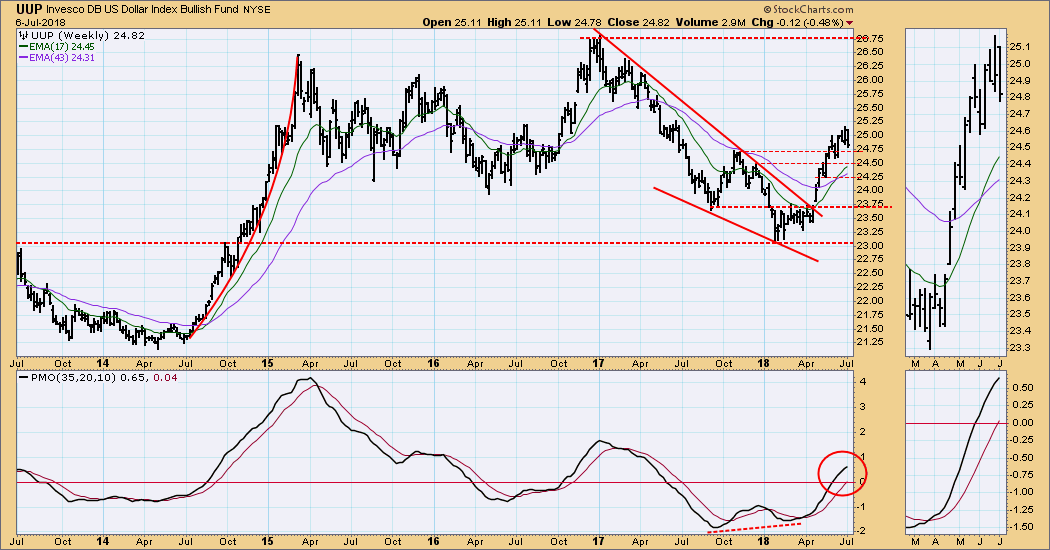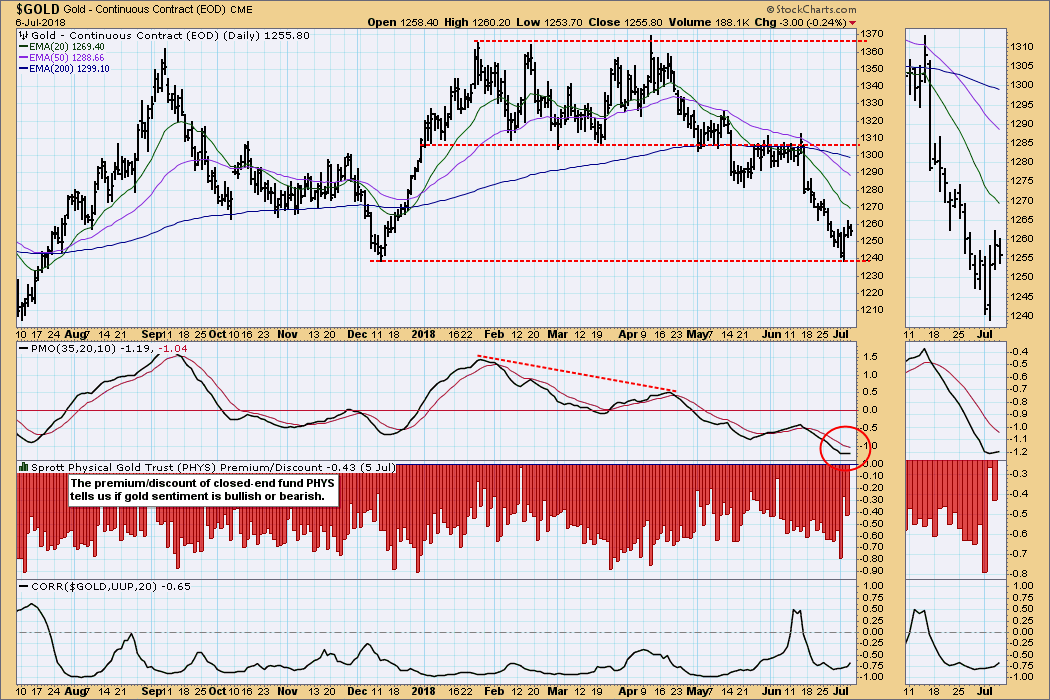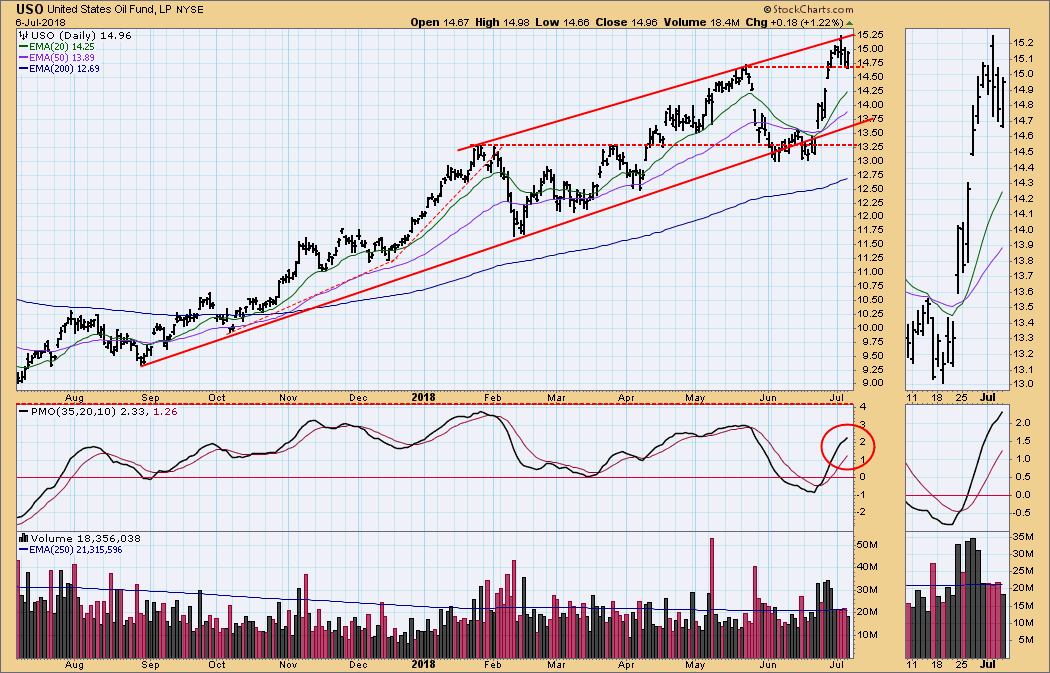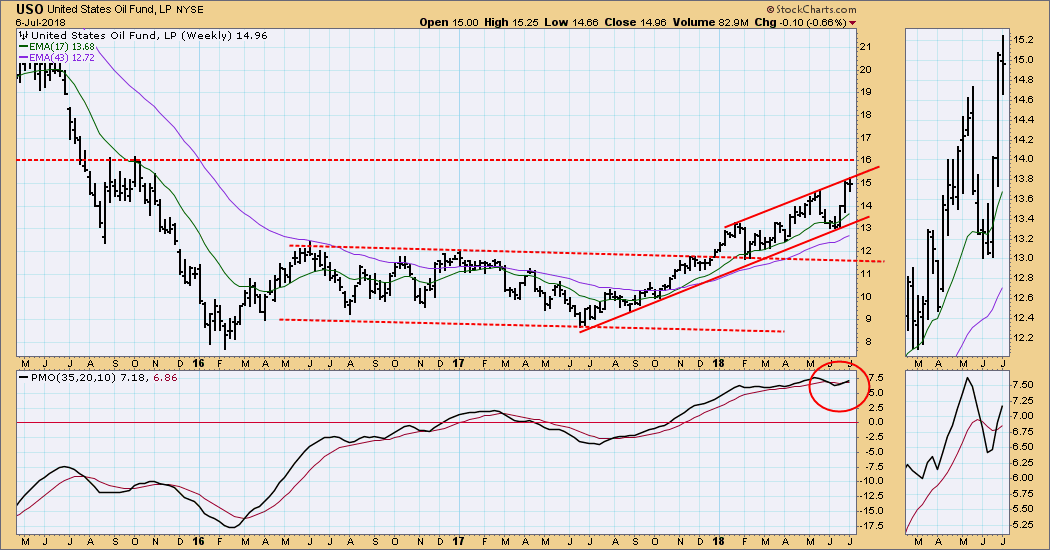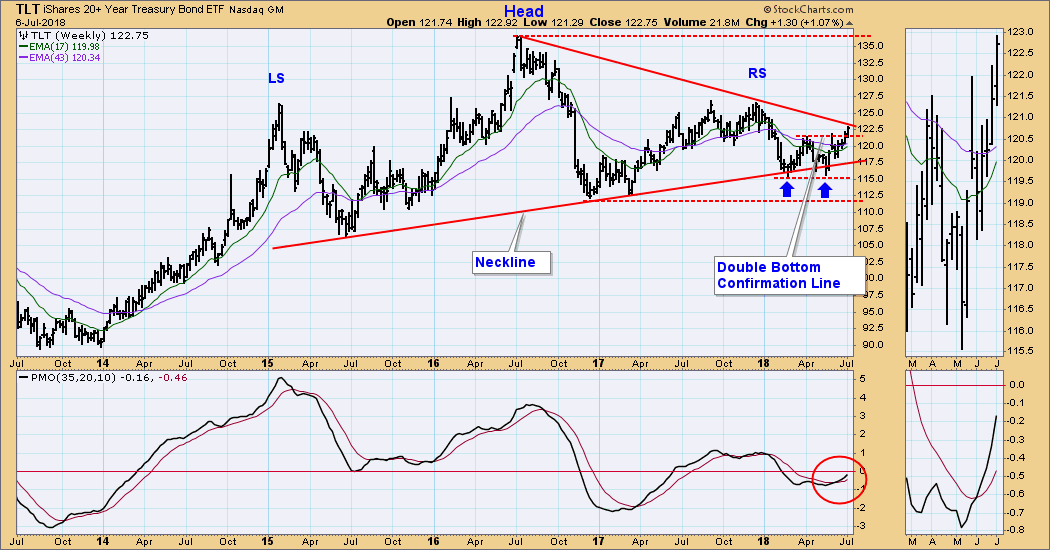
Wedges are a favorite of mine because they are so reliable. For example, there is a high probability that rising wedge formations will resolve downward, so it is usually best to wait for this resolution and the aftermath before going long. Two weeks ago SPY broke down from a rising wedge formation, and from there it moved sideways for almost two weeks. This could have been the prelude for a more serious decline, but on Friday SPY broke out of the two-week trading range, causing the daily PMO to turn up, which is a very short-term BUY signal. I say very short-term, because, as you can see on the chart, PMO direction changes can have the life span of a mayfly. Nevertheless, they provide the earliest indication that a new trend could be starting, presenting us with a decision point.
The DecisionPoint Weekly Wrap presents an end-of-week assessment of the trend and condition of the stock market (S&P 500), the U.S. Dollar, Gold, Crude Oil, and Bonds.
SECTORS
Each S&P 500 Index component stock is assigned to one, and only one, of 10 major sectors. This is a snapshot of the Intermediate-Term and Long-Term Trend Model signal status for those sectors.
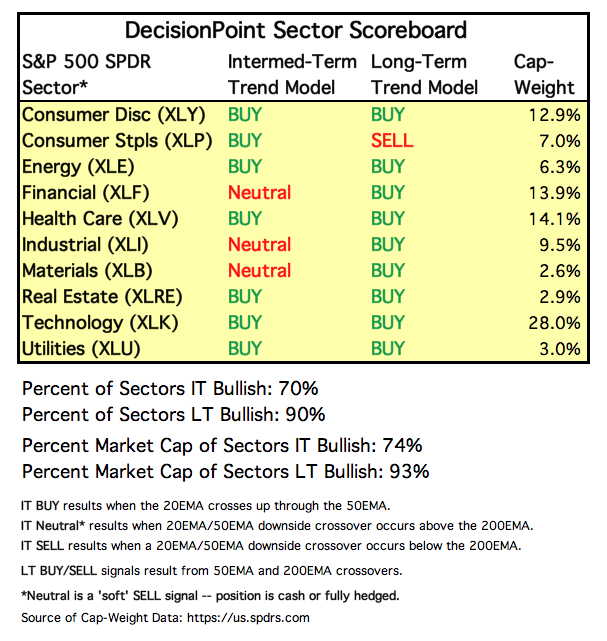
STOCKS
IT Trend Model: BUY as of 5/11/2018
LT Trend Model: BUY as of 4/1/2016
SPY Daily Chart: Let's take a closer look at that daily PMO BUY signal. It is a smooth, clean bottom, but it is above the zero line. There is some potential here, but I prefer PMO bottoms well below the zero line because that oversold condition adds more potential upside to the BUY signal. As for price movement, it appears that SPY will not be moving down to test the bottom of the four-month trading range. Instead, a retest of the top of the trading range seems imminent.
SPY Weekly Chart: The rising price trend remains intact, but the weekly PMO is still falling.
Short-Term Market Indicators: The STO-B (breadth) and STO-V (volume) are getting to be overbought, and this condition could interfere with the impending price breakout attempt.
Intermediate-Term Market Indicators: These three indicators have bottomed near the zero line. This looks very bullish.
Conclusion: Since January the stock market has been very temperamental, and, even though we have an IT Trend Model BUY signal, I have found it difficult to work up much enthusiasm for a bullish scenario. I can't say that I have escaped this ennui, but I have to admit that we've got a pretty decent setup for taking out the all-time highs. If there is some follow through on Monday, I'll have a little more confidence in that outcome, but I'm also prepared for a fast fizzle at or below overhead resistance.
DOLLAR (UUP)
IT Trend Model: BUY as of 4/24/2018
LT Trend Model: BUY as of 5/25/2018
UUP Daily Chart: UUP has topped, and the daily PMO negative divergence certainly warned of that possibility. There are two lines of support that could limit the pullback.
UUP Weekly Chart: It appears that a correction is beginning, and there are three possible support levels, the lowest at 24.25. Below that at 23.75 is a major level of support. I can't say that is where price is headed, but it sure is a magnet to my eyeballs.
GOLD
IT Trend Model: NEUTRAL as of 5/2/2018
LT Trend Model: SELL as of 6/22/2018
GOLD Daily Chart: The daily PMO has turned up, and gold has bounced off horizontal support. With the dollar apparently topping out, a gold rally looks probable.
GOLD Weekly Chart: Gold has found support on the intersection of the rising trend line and horizontal support; however, it is still bearish in this time frame. The 17EMA has crossed down through the 43EMA, and the weekly PMO is falling.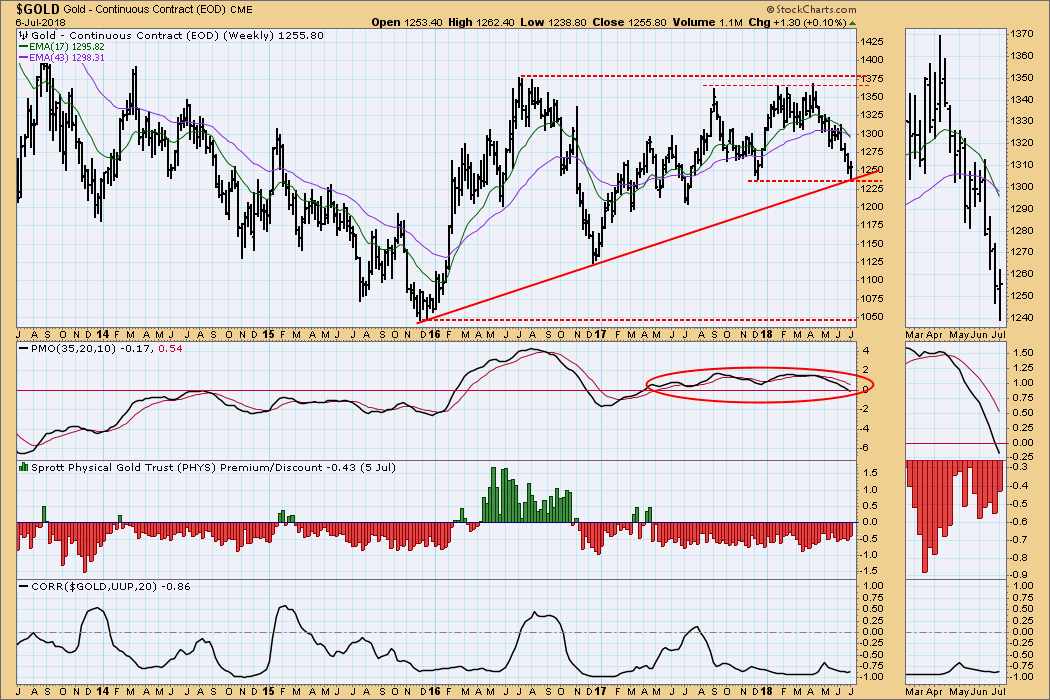
CRUDE OIL (USO)
IT Trend Model: BUY as of 6/26/2018
LT Trend Model: BUY as of 11/2/2017
USO Daily Chart: Price has pulled back from the top of the rising trend channel, but it has so far remained above the horizontal support, drawn across the May top. The daily PMO is decelerating and getting overbought, so another pullback may be in the cards.
USO Weekly Chart: In addition to price being confined in the channel, there is important resistance at about 16.00. Also, the weekly PMO is overbought and looking toppy.
BONDS (TLT)
IT Trend Model: BUY as of 6/1/2018
LT Trend Model: SELL as of 2/8/2018
TLT Daily Chart: Price has broken through the zone of resistance, which implies higher prices to come. The daily PMO is bullish, but becoming somewhat overbought.
TLT Weekly Chart: TLT has broken above the double bottom confirmation line and is challenging the declining tops line, drawn from the July 2016 top. The minimum upside projection is about 127.50, and that would effectively invalidate the head and shoulders pattern. The weekly PMO is above the signal line and rising, and this supports a continued bullish outcome.
**Don't miss any of the DecisionPoint commentaries! Go to the "Notify Me" box toward the end of this blog page to be notified as soon as they are published.**
Technical Analysis is a windsock, not a crystal ball.
Happy Charting!
- Carl
NOTE: The signal status reported herein is based upon mechanical trading model signals, specifically, the DecisionPoint Trend Model. They define the implied bias of the price index based upon moving average relationships, but they do not necessarily call for a specific action. They are information flags that should prompt chart review. Further, they do not call for continuous buying or selling during the life of the signal. For example, a BUY signal will probably (but not necessarily) return the best results if action is taken soon after the signal is generated. Additional opportunities for buying may be found as price zigzags higher, but the trader must look for optimum entry points. Conversely, exit points to preserve gains (or minimize losses) may be evident before the model mechanically closes the signal.
Helpful DecisionPoint Links:
DecisionPoint Shared ChartList and DecisionPoint Chart Gallery
Price Momentum Oscillator (PMO)
Swenlin Trading Oscillators (STO-B and STO-V)

